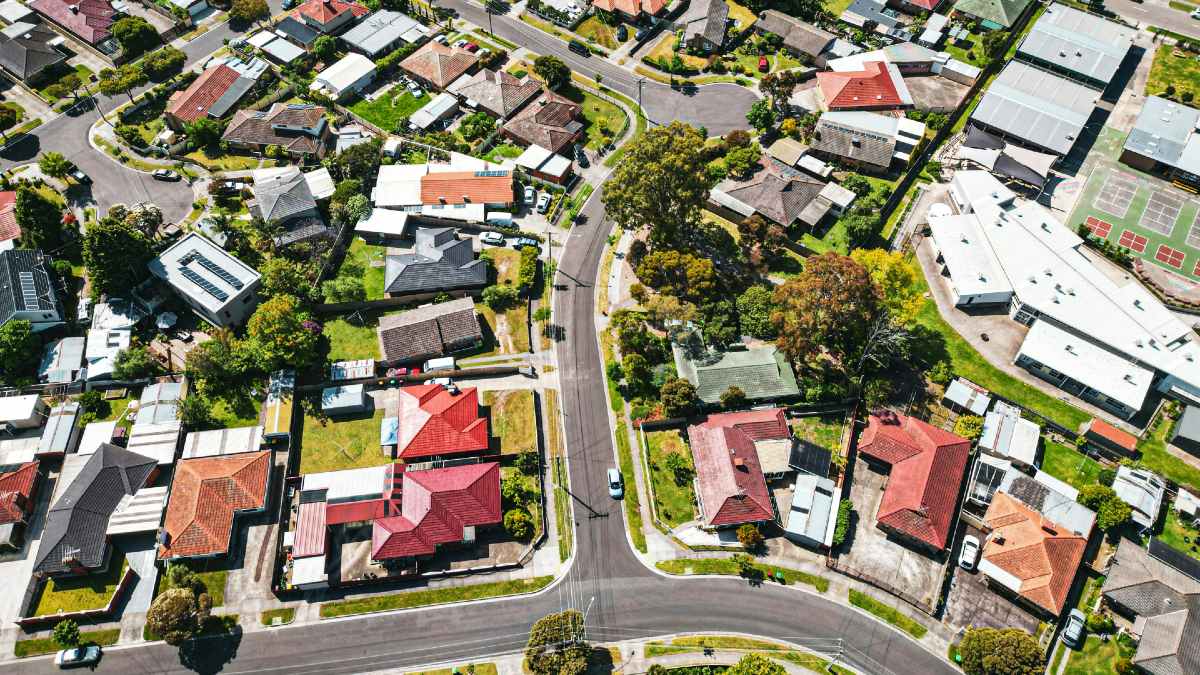Understanding Offset Accounts and Redraw Facilities for Investment Loans
Offset accounts and redraw facilities both save interest, but which suits investors best?
When it comes to structuring a property loan, investors often have to choose between using an offset account or relying on the loan’s redraw facility.
Both features can save thousands in interest over the life of a loan, but they work in different ways. Choosing the right one can affect cash flow, tax outcomes, and flexibility.
IN THIS ARTICLE
What is an Offset Account?What is a Redraw Facility?Offset vs Redraw: What are the Differences?Pros and Cons of Offset AccountsPros and Cons of Redraw FacilitiesWhich Works Best for Investors?

Promoted by loans.com.au
What is an Offset Account?
An offset account is a transaction account that links directly to your mortgage. The balance of the offset reduces the amount of your loan on which interest is calculated.
For example, if you have a $400,000 investment loan and $50,000 sitting in your offset, your lender only charges interest on $350,000. The higher your offset balance, the less interest you pay.
Offset accounts operate like everyday bank accounts: you can deposit rent, pay bills, transfer funds, or use a debit card. For investors, this flexibility makes it easier to funnel rental income and other savings into the account, reducing interest while keeping funds accessible for future expenses such as maintenance or unexpected vacancies.
An offset account is an added feature, and loans with this typically have higher interest rates than those without or that may come with an ongoing fee.
What is a Redraw Facility?
A redraw facility is a loan feature that allows you to access extra repayments you’ve made over and above the minimum required. By paying extra into your loan, you reduce the principal sooner and save on interest. If needed, you can “redraw” those funds later.
For instance, if your minimum repayments cover $400,000 but you’ve contributed an additional $20,000, your loan balance drops to $380,000. You can usually withdraw that $20,000 later through your lender’s app, online banking, or by request.
For investors, redraw can provide a disciplined way to reduce debt while retaining access to cash. It’s often used to save for large one-off costs like renovations.
However, a redraw facility is less flexible than an offset account, and access to it can sometimes be restricted, e.g., limited to a certain amount per month.
Offset vs Redraw: What are the Differences?
While both reduce interest, the mechanics and flexibility differ:
| Feature | Offset Account | Redraw Facility |
| How it works | Linked to your loan, balance reduces interest | Extra repayments reduce the loan principal |
| Accessibility | Instant access | Access via the lender’s systems |
| Flexibility | Works like a normal bank account | Must move funds back out of the loan to use |
| Cost | Often attached to package loans with annual fees | Usually included at no extra cost |
| Tax treatment | Clean separation between loan and savings | Using redraw for personal expenses can affect interest deductibility |
| Risk | Funds always accessible as long as the loan remains | Redraw balance may be reduced or lost if you refinance or restructure |
When it comes to tax treatment, note that using the redrawn funds for private or personal expenses (e.g, a holiday or renovations to your own home), the interest on that portion of the loan becomes non-deductible.
The Australian Taxation Office (ATO) looks at the use of the borrowed funds, not where they came from originally. So even though the loan might have started as an investment loan, once you redraw and use the money for personal purposes, the deductibility is affected.
Your loan effectively becomes mixed-purpose: part investment, part personal. This makes record-keeping more complex because you’d need to apportion interest between deductible and non-deductible parts.
Pros and Cons of Offset Accounts
Pros:
- Flexible and easy to access
- Suitable for separating rental income, tax savings, and personal funds
- Simpler from a tax perspective; funds aren’t mixed with loan principal
Cons:
- Often comes with package fees, which can add up
- Benefits depend on maintaining a healthy balance
Pros and Cons of Redraw Facilities
Pros:
- Usually free of ongoing costs
- Encourages extra repayments and debt reduction
- Can be useful for lump-sum needs like renovations
Cons:
- Access can be restricted (and may come with a fee)
- Some lenders may limit redraw if you refinance or close the loan
- Tax issues can arise if redraw is used for personal expenses on an investment loan, as this can make interest partially non-deductible
Which Works Best for Investors?
The best choice depends on your investment style and cash flow needs.
Offset accounts tend to suit investors who want maximum flexibility. If you manage multiple properties, need quick access to funds, or want to simplify tax record-keeping, offsets are often the better option. They’re especially valuable for investors who maintain larger cash buffers.
Redraw facilities work well for those who prefer a disciplined, “set and forget” approach. If you don’t need frequent access to funds and want to focus on paying down debt without paying extra fees, redraw may be the right fit.
Some investors use a combination, maintaining an offset for short-term liquidity while making additional repayments to reduce the loan balance and accessing it through redraw only when necessary.
The right choice depends on your strategy: are you an active investor who values liquidity, or a long-term planner who prefers simplicity? Understanding the trade-offs ensures your loan works as hard as your property portfolio.
At loans.com.au, we offer investment home loans with unlimited free redraws. This means you can make extra repayments and redraw your funds at no extra cost. Our customers also have the option to add an offset sub-account with a Visa debit card. Visit our website and talk our lending specialists to know more.
Image by Vitaly Gariev on Pexels
Property prices rise nationwide despite election and tariff jitters
Australia’s residential property values reached a new record high in April, with all capital cities posting gains despite uncertainty over US tariff announcements and the upcoming federal election.
•
Published 01 May, 2025
SHARE ARTICLEIN THIS ARTICLE
Holiday break weighs on market activityMost property markets yet to recoverRegional areas continue to outperform capital cities

Cotality’s (formerly CoreLogic) Home Value Index recorded a 0.3% uplift in the previous month, bringing the national median dwelling value to $825,349.
This marks the third consecutive month of growth in home values, with the increase adding approximately $2,720 to the median price of a home Down Under.
Leading this trend was the lift in home values recorded across every capital – ranging from a 0.2% rise in Sydney and Melbourne, to a 1.1% jump in Darwin.
Despite the gains, however, there was a noted slowdown in the pace of growth compared to March’s +0.4%, with market sentiment and auction clearance rates slumping throughout April.
“The rate cut in February supported an upward inflection in housing market conditions, but the positive influence from lower rates seems to be losing some potency,” said Tim Lawless, research director at Cotality.
The recently rebranded property analytics firm also chalked up the slight easing in the HVI to declining household confidence amid US tariff developments and the federal election on 3 May.
“It is likely this may be causing some buyers and sellers to delay their decisions,” Mr Lawless said.
https://e.infogram.com/13326c02-6d45-4de1-8268-b7b9f022d809?parent_url=https%3A%2F%2Fwww.yourinvestmentpropertymag.com.au%2Fnews%2Fcotality-hvi-april-2025&src=embed#async_embed
Holiday break weighs on market activity
Considering April’s growth, Cotality noted that uncertainties were more apparent in sales and listings volumes than in home values, which were compounded further by the “super break” many Australians took between Easter and ANZAC public holidays.
In the week ending 20 April, Cotality recorded only 644 auctions held across the combined capitals, the lowest Easter auction volume since 2019.
This followed weak pre-Easter figures, which saw the preliminary clearance rate drop to its lowest level this year.
Similarly, new listing numbers fell to their lowest levels for this time of year since 2019, with just 19,650 properties listed ‘for sale’ across the combined capitals over the four weeks to 27 April.
“With further rate cuts likely as soon as May 20th, and a level of certainty returning to the market after the federal election on May 3rd, we expect a further modest rise in values for 2025,” Mr Lawless said.
Most property markets yet to recover
Zooming closer into the latest HVI data reveals not all markets have returned to peak levels, despite the broad-based rise.
Across the capitals, only the mid-sized cities have reached record highs.
Meanwhile, Sydney values remain 1.1% below their September 2024 high, and Melbourne’s are still 5.4% down from their record peak in 2022.
Similarly, Hobart is down 11.1%, while in Darwin and the ACT, values remain 2.7% and 6.4% below their all-time highs.
Nationally, this translated into an annual rise of just 3.2% – the slowest annual increase since the 12 months ending August 2023.
“The loss in momentum is reflective of the persistent slowdown in value growth seen between mid-2024 and early 2025, which culminated in falls over the three months ending January 2025 [before turning positive in February],” Mr Lawless noted.
“Given the softer trajectory of growth through last year, it’s likely the annual pace of gains will continue to soften over the coming months, despite the positive inflection in values since February.”
Regional areas continue to outperform capital cities
Regional areas remain the key driver of growth, rising faster than capital cities with its 0.6% gains versus the latter’s 0.2%.
On an annual basis, the difference was even more pronounced.
The median dwelling value across the regional areas rose 5.3% over the 12 months to April, while combined capitals grew 2.6%.
As at 30 April, the median home value in combined regionals stood at $673,373.
In capitals, the median home value is currently $905,763.
The trend of regional home values outpacing the capitals has been an ongoing theme in the monthly growth trends since October last year.
Regional SA and regional WA posted the most significant gains, up 1.5% and 1.3%, respectively, over the past month.
Image by Geometric Photography on Pexels



